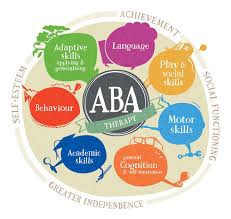A Comprehensive Guide to Becoming an Applied Behavior Analyst (ABA) Therapist
Applied Behavior Analysis (ABA) is a highly effective therapeutic approach used to improve socially significant behaviors in individuals, particularly those with autism and other developmental disabilities. ABA therapy focuses on understanding behavior patterns and employing scientifically proven techniques to bring about positive changes. Becoming an ABA therapist can be a deeply rewarding career, as it allows practitioners to help individuals lead more fulfilling lives by developing new skills, improving communication, and reducing problematic behaviors. This guide will walk you through the steps to becoming an ABA therapist, covering educational requirements, certification, job responsibilities, and career opportunities.
1. What Is Applied Behavior Analysis?
Applied Behavior Analysis is a science-based approach that seeks to understand behavior through the principles of learning theory. ABA therapy involves:
- Observation and assessment: Identifying behavioral patterns in clients.
- Intervention: Using behavioral strategies to increase desirable behaviors and reduce harmful or maladaptive ones.
- Evaluation: Monitoring progress and adjusting interventions as needed to achieve positive outcomes.
ABA therapy is widely recognized for its success in treating individuals with autism spectrum disorder (ASD), although it is also used in various other contexts, such as education, mental health treatment, and workplace behavior management. ABA therapists work closely with clients, families, and other professionals to improve specific behaviors and support personal growth.
2. Steps to Becoming an ABA Therapist
Becoming an ABA therapist requires a combination of education, certification, and experience. Below are the key steps involved in pursuing this career path.
A. Obtain a Bachelor’s Degree
The first step to becoming an ABA therapist is earning a bachelor’s degree. While there is no strict requirement for a specific undergraduate major, most aspiring ABA therapists choose to study fields related to psychology, education, or behavioral science. Common degrees include:
- Psychology
- Special education
- Social work
- Child development
These fields provide a solid foundation in understanding human behavior, learning processes, and developmental disorders, which are essential when working in ABA therapy.
B. Gain Experience Working with Individuals with Developmental Disabilities
While pursuing your bachelor’s degree, gaining hands-on experience working with individuals with developmental disabilities is highly beneficial. Many ABA therapists start as paraprofessionals, behavioral technicians, or aides in schools or healthcare facilities. This early experience helps you develop practical skills and provides insights into the day-to-day challenges and rewards of working with clients in an ABA setting.
C. Pursue a Master’s Degree in Applied Behavior Analysis or a Related Field
To become a Board Certified Behavior Analyst (BCBA), the gold standard in ABA therapy, you will need to earn a master’s degree in Applied Behavior Analysis, psychology, or a related field. Many universities offer specialized ABA programs that are designed to meet the coursework requirements for certification by the Behavior Analyst Certification Board (BACB). Coursework typically covers topics such as:
- Behavioral assessment
- Behavior change procedures
- Ethics in behavior analysis
- Data collection and analysis
- Research methods
Completing a master’s program in ABA typically takes two years and includes both classroom learning and supervised fieldwork.
D. Complete Supervised Fieldwork
In addition to your coursework, certification as a BCBA requires completing supervised fieldwork. This practical experience allows you to apply ABA techniques under the supervision of a certified behavior analyst. Supervised fieldwork usually consists of two components:
- Supervised Independent Fieldwork: This requires a minimum of 2,000 hours of supervised experience, which can be completed through a part-time or full-time role in an ABA clinic, school, or similar setting.
- Concentrated Supervised Fieldwork: An accelerated option, requiring 1,500 hours of intensive supervised experience.
During your fieldwork, you will work with clients, conduct behavioral assessments, and implement interventions under the guidance of a supervisor.
E. Pass the BCBA Certification Exam
Once you have completed your master’s degree and supervised fieldwork, the next step is to pass the BCBA certification exam. The exam is administered by the Behavior Analyst Certification Board (BACB) and tests your knowledge in key areas such as:
- Concepts and principles of ABA
- Behavior change systems
- Ethical and professional conduct
- Assessment and intervention techniques
The BCBA exam consists of 160 multiple-choice questions and is typically taken at a testing center. Once you pass the exam, you will be certified as a Board Certified Behavior Analyst (BCBA), which qualifies you to practice independently as an ABA therapist.
3. Roles and Responsibilities of an ABA Therapist
ABA therapists work with individuals to modify behavior in a variety of settings, including clinics, schools, homes, and community organizations. The role of an ABA therapist can vary depending on the setting and the needs of the client. Common responsibilities include:
A. Conducting Behavioral Assessments
ABA therapists start by conducting detailed behavioral assessments to identify target behaviors for intervention. These assessments include:
- Direct observation of the individual’s behavior.
- Interviews with caregivers or family members.
- Data collection on behavior frequency, duration, and intensity.
Assessments are used to develop a comprehensive treatment plan that is tailored to the client’s unique needs.
B. Developing and Implementing Behavior Intervention Plans (BIPs)
Based on the findings of the assessment, the ABA therapist creates a Behavior Intervention Plan (BIP), which outlines specific strategies to increase positive behaviors and reduce problematic ones. The BIP includes:
- Short-term and long-term goals.
- Specific interventions and techniques.
- Data collection methods to track progress.
ABA therapists are responsible for implementing these interventions in one-on-one or group sessions, using positive reinforcement and other ABA techniques to bring about desired behavior changes.
C. Data Collection and Analysis
Data collection is a crucial aspect of ABA therapy. Therapists are responsible for systematically recording client behavior to assess the effectiveness of interventions. Common data collection methods include:
- Frequency counts (how often a behavior occurs).
- Duration (how long a behavior lasts).
- Antecedent-Behavior-Consequence (ABC) charts (recording events before and after the behavior).
The therapist regularly reviews and analyzes this data to adjust the treatment plan and ensure progress is being made.
D. Training and Supporting Caregivers
In addition to working directly with clients, ABA therapists often train and support caregivers, parents, and teachers in implementing behavior strategies at home or in the classroom. This collaboration helps ensure that positive behavior changes are consistent across different environments.
E. Collaborating with Other Professionals
ABA therapists may collaborate with other professionals, such as speech-language pathologists, occupational therapists, and educators, to create a comprehensive treatment plan that addresses all aspects of the client’s needs.
4. Certification Levels in ABA
In addition to BCBA certification, there are two other certification levels that individuals can pursue, depending on their education and career goals.
A. Registered Behavior Technician (RBT)
The Registered Behavior Technician (RBT) is an entry-level certification for individuals who work directly with clients under the supervision of a BCBA. Becoming an RBT requires:
- A high school diploma or equivalent.
- 40 hours of training in behavior analysis.
- Passing the RBT exam.
RBTs typically assist in implementing behavior intervention plans, collecting data, and working one-on-one with clients.
B. Board Certified Assistant Behavior Analyst (BCaBA)
The Board Certified Assistant Behavior Analyst (BCaBA) is a mid-level certification for individuals with a bachelor’s degree in behavior analysis or a related field. BCaBAs work under the supervision of a BCBA and are qualified to assist with assessments, data analysis, and developing behavior intervention plans.
5. Career Opportunities for ABA Therapists
ABA therapy is a growing field with a wide range of career opportunities. As the prevalence of autism and other developmental disorders increases, the demand for qualified ABA therapists continues to rise. Here are some common career paths for ABA professionals:
A. Private Practice
Many ABA therapists choose to open their own private practices, where they work with clients one-on-one or in small groups. Private practice offers flexibility in terms of scheduling and the ability to specialize in certain areas, such as early intervention or social skills development.
B. Schools and Educational Settings
ABA therapists are often employed in schools, where they work with students with autism and other developmental disabilities. In these settings, ABA therapists may develop and implement behavior intervention plans, support classroom teachers, and assist in developing individualized education programs (IEPs).
C. Autism Clinics and Developmental Centers
ABA therapists frequently work in autism clinics and developmental centers, where they provide therapy to children, adolescents, and adults with developmental disabilities. These clinics often employ teams of professionals, including speech-language pathologists, occupational therapists, and psychologists, to provide comprehensive care.
D. Research and Academia
Some ABA therapists pursue careers in research and academia, contributing to the advancement of behavior analysis through scientific studies and teaching at universities or colleges.
6. Challenges and Rewards of a Career in ABA Therapy
While ABA therapy is a rewarding field, it also presents certain challenges. Understanding both the rewards and difficulties can help you prepare for a successful career in this profession.
Challenges
- Emotional demands: Working with individuals with developmental disabilities, particularly children with autism, can be emotionally challenging. Patience, resilience, and empathy are essential.
- Data collection: ABA therapy requires detailed data collection and analysis, which can be time-consuming and demanding.
- High standards for certification: Achieving and maintaining certification as a BCBA requires significant education, supervised experience, and continuing education.
Rewards
- Making a difference: ABA therapists have the opportunity to make a meaningful impact on the lives of their clients, helping them achieve greater independence and improved quality of life.
- High demand: The demand for ABA therapists is growing
, particularly in areas with a shortage of behavioral health professionals.
- Diverse career opportunities: ABA therapists can work in various settings, including private practice, schools, and clinics, offering flexibility and variety in career options.
Conclusion
Becoming an ABA therapist requires a commitment to education, hands-on experience, and certification, but the rewards of helping individuals with developmental disabilities lead better lives are substantial. With growing demand for ABA professionals, this career offers promising opportunities for those passionate about behavior analysis and improving the well-being of others.


